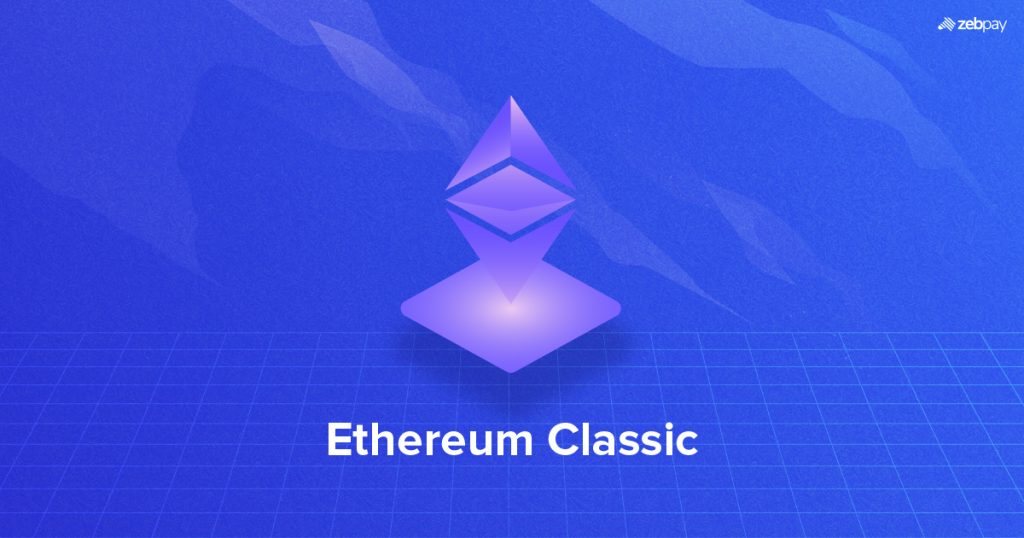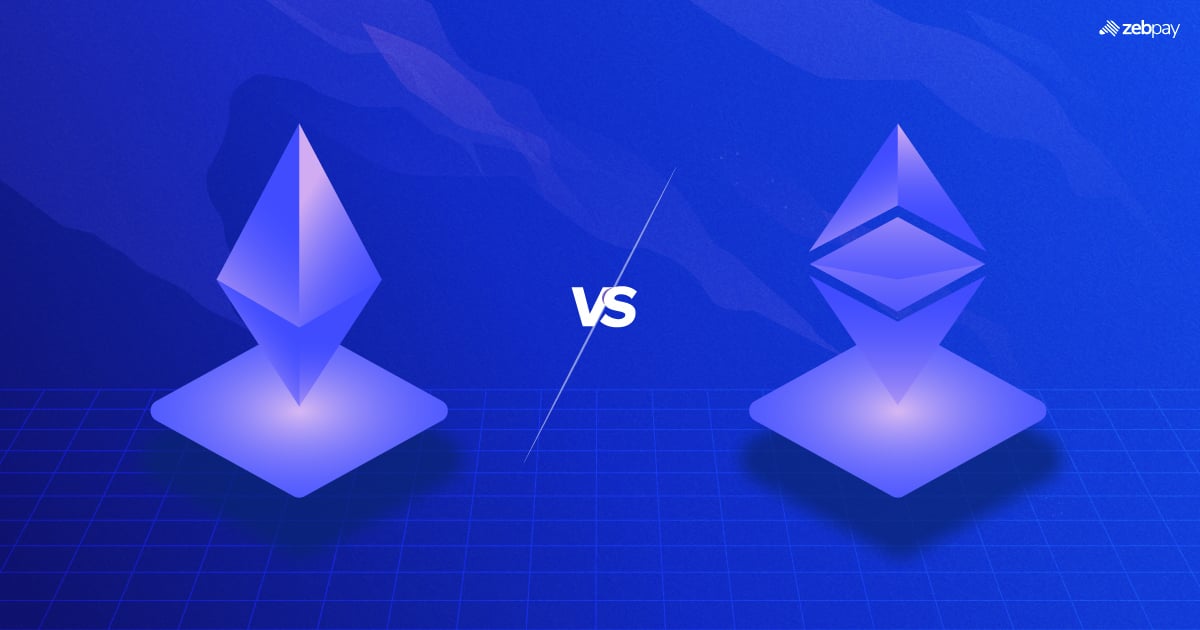If you are someone who has been trading in the crypto markets you would have heard about Ethereum and Ethereum Classic. Is one a clone of the other? Why are there two crypto assets with the same name?
In this article, let’s deep dive into the history of these two coins and understand the similarities and differences between the two.
Ethereum (ETH)

Ethereum was founded by Vitalik Buterin in 2015. It is a Blockchain that enables Smart Contract agreements. Smart contracts are code-enabled agreements that are authorised when the agreed-upon conditions are met by the parties thus eliminating the need for middlemen.
Ethereum, the second largest crypto in the world, has a market cap close to $188 billion at the time of writing. It remains the most popular choice for crypto investors after Bitcoin ( BTC).
It is one of the most resilient crypto assets with state-of-the-art use cases. The Ethereum blockchain is used to build Decentralised applications, Stablecoins, NFTs, and many more.
Ethereum Classic (ETC)

To understand the origin of the Ethereum classic, we need to go back to 2016. Ethereum Classic is a result of one of the most significant events in Crypto history, a hard fork of the Ethereum Blockchain network.
In July 2016, a $50 million hack resulted in draining the resources of Ethereum’s Blockchain. The Ethereum community decided to alter the Blockchain rules to return the lost money to the investors, this alteration is known as a hard fork.
Read about: Hard Fork And Soft Fork Explained
A hard fork changes the fundamentals of the network. Back when the hack occurred, the Ethereum community had to take a call to continue on the same network and incur the loss of the hack or create a hard fork to recover the lost capital. The decision to hard fork the network eventually created a Blockchain that operates with a different set of rules.
This led to the creation of today’s known ETH Blockchain network while Ethereum Classic is the older Blockchain. Ethereum Classic is powered by its token ETC, which is used to run its network to build Decentralised applications and many other functionalities.
Read about: What is Blockchain Layers?
Ethereum vs Ethereum Classic
| | Ethereum | Ethereum Classic |
| Mining methods | Proof of Stake ( POS) | Proof of Work (POW) |
| Circulating Supply | No fixed supply | 230 million |
| Blockchain Functionality | To build smart contract-enabled apps | To build smart contract-enabled apps |
| Immutability | Modifications can be made | Transactions are immutable |
| Market Capitalization | $ 188 billion | $ 5 billion |
| Developer usage of the Networks | Decentralised apps, NFTs, DEFI | Very few use cases |
| Prospects | POS increase the transaction speed of the network which helps programmers to build apps on its network faster | ETC still works with the Proof of Work method, which is slow and energy-consuming |
- Mining methods: Ethereum Classic works on the traditional Proof of Work (POW) mining process whereas Ethereum will soon be moving to Proof of Stake ( POS), an energy-efficient mining process that involves staking rather than solving complex problems to mine coins.
- Circulating Supply: ETH does not have any fixed supply but ETC has a finite supply of 230 million.
- Blockchain Functionality: Both Ethereum and the Ethereum classic networks are used to build smart contract-enabled applications.
- Immutability: The transactions of the Ethereum classic network are immutable whereas modifications can be made to an Ethereum Blockchain.
- Market Capitalization: Ethereum currently has a market cap of $ 188 billion. Ethereum Classic currently has a market cap of $ 5 billion.
- Developer usage of the Networks: Most of the Decentralised apps and NFTs in the market are currently powered by the Ethereum Blockchain. The total value locked ( TLV) for some of these apps is close to $ 7 billion. Uniswap, Maker, Curve Finance, and Compound are some of the notable D-Apps that run day-to-day operations on the Ethereum Blockchain. On the other hand, ETC has very few use cases owing to a series of hacks on its network and a lack of effective security protocols. This eroded the trust developers can have in the network.
- Prospects: Ethereum Blockchain will soon migrate to Proof of stake from Proof of Work making it hyper-efficient. The POS model will also increase the transaction speed of the network, allowing more operations per unit time. This faster method will allow more programmers to build apps on its network. ETC still works with the Proof of Work method, which is slow and energy-consuming.
Read about: Proof of Work vs Proof of Stake
Final thoughts
Out of the two, Ethereum is the clear winner with better use cases and promising prospects. With amazing functionalities and a more flexible ecosystem, the Blockchain can power innovative apps. Though ETH has seen ups and downs in its price owing to market volatility, it is a household name in the Crypto space growing leaps and bounds by the day.
To know more visit ZebPay Singapore. Subscribe to our newsletter to get the latest updates on Crypto.

